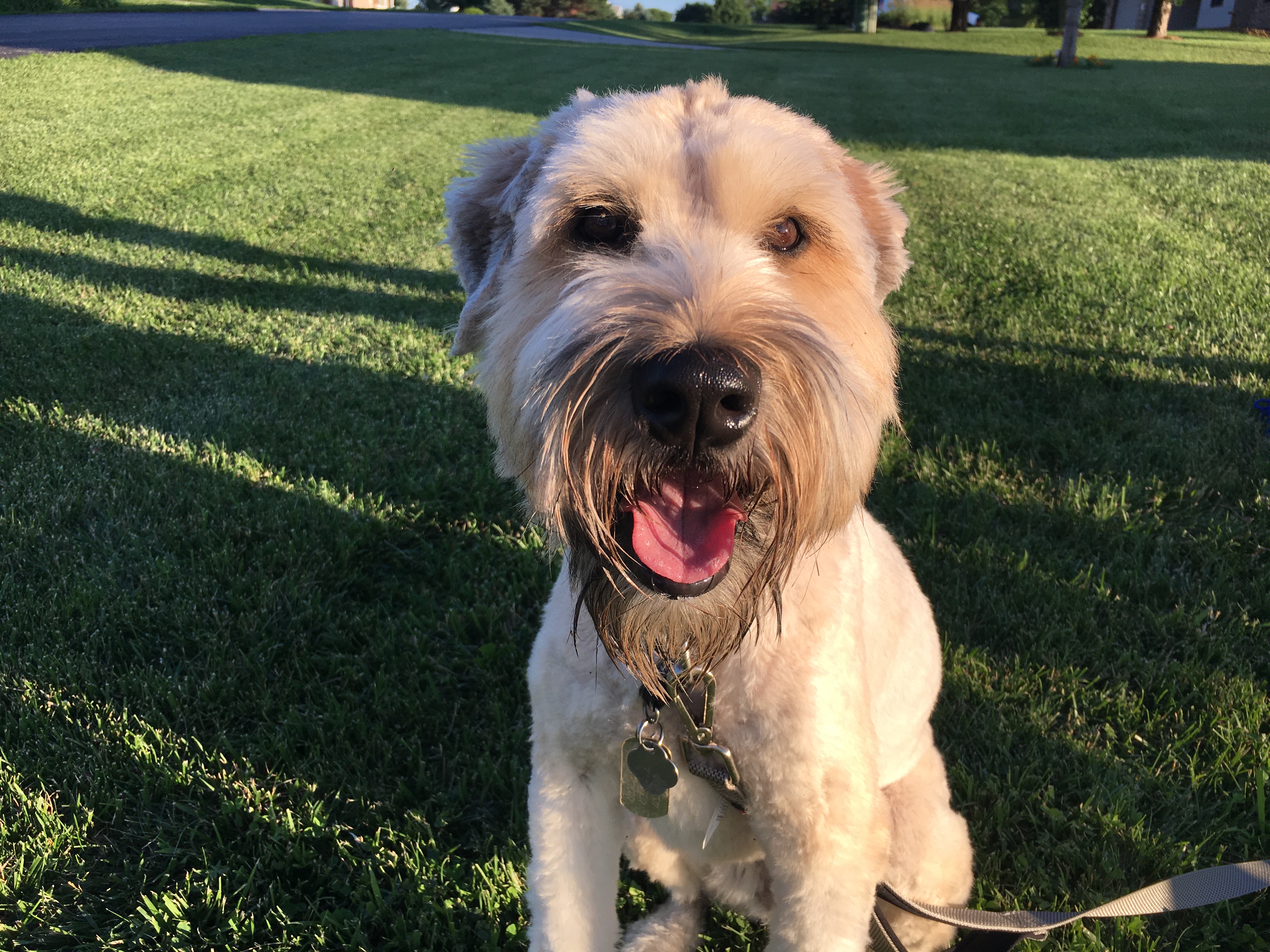Teaching an Excited Wheaton Terrier to Stay to Help with Her Separation Anxiety
By: David Codr
Published Date: June 27, 2018
For this Omaha dog training session we taught 2 year-old Wheaten Terrier Casey to stay to help her practice being alone and help her get over her separation anxiety.
Knowing that Casey got excited and liked to jump up on guests, I called ahead and gave the family some instructions to show them how to stop any dog from jumping up on guests at the door.
When I sat down with the guardians, one of the first questions I asked was how much exercise Casey was getting. Unlike most of my clients, the guardians were actually providing her a decent amount of exercise, but it wasn’t enough for her age and breed requirements. Your average dog needs a good hours worth of exercise every day and Casey’s guardians were meeting at standard. However herding breeds are usually higher stamina dogs who typically need more rules, exercise and structure than other dogs in order to be successful.
Compounding the problem was the families lack of a fenced in yard. Living on such a large property, the guardians had not fenced in their yard and were unsure if they were going to do so.
One of the recommendations that I made was to make sure that Casey gets at least one trip to a dog park so that she can run freely as much as she wants. One trip a week should be the minimum but it would be nice to see Casey going to the dog park a few times a week or before any activity where she might be a nuisance. Taking Casey to the dog park for a couple of hours before one of the kids has some friends over will make it much easier for her to stay out of trouble.
I recommended the guardians start an exercise journal, annotating the time of any exercise as well as the duration and other related specifics. I also recommended they incorporate the times of any behavioral problems as well as meals in this exercise journal. If the guardians keep this for a month and grade Casey each day at the end of the day, while simultaneously varying the exercise elements, they should eventually come upon the right combination of exercises and activities that put Casey in a position to succeed.
Next I went over the importance of rules and structure. Dogs tend to go through life probing to identify where boundaries and limits are. But they also do this to identify who the leaders are. In a dog world, leaders are often perceived as those who are enforcing rules and boundaries. Because the family had no rules and boundaries in place, this can easily lead herding breed like Casey into thinking that she is in charge of the humans. This was clearly the case here and this lack of structure was absolutely related to Kay’s many of Casey’s unwanted behaviors.
After showing the guardians how they can enforce rules in a positive way, I went over the importance of recognizing and rewarding Casey when she engaged in desired actions and behaviors like sitting, coming and laying down. To help the family get into a habit of rewarding these preferred behaviors I went over my Petting with a purpose and Passive training philosophies.
Now we were ready to address Casey’s separation anxiety and overall insecurities. Many dogs that suffer from separation anxiety do so because their family has not taught them how to be home alone. Often the only time the dog practices being alone is when people completely leave the house. Although this seems very logical, I have found an easy way to help a dog practice being alone while the humans are still in the home.
To stop a dog from suffering from separation anxiety, I like to teach them how to stay. Once the dog knows how to stay, the guardians can help the dog practice staying alone in a room while the human steps into the next room for progressively longer and longer periods of time.
You can learn how to train a dog to stay as well as get tips to help a dog get over a case of separation anxiety by watching the video below.
Teaching the dog to stay, then practicing this often will help reduce Casey’s separation anxiety. Combined with the rules, structure, added exercise and rewarding of desired behaviors should all help her stop suffering from separation anxiety.
I also showed the guardians how to teach Casey to focus on command. This is a great way to redirect a dog’s attention away from something that may get them into trouble.
Helping Casey learn new tricks and commands can go a long ways towards building up her self esteem and confidence. If one child teaches her a new trick a week, and they trade off weekly until each child has taught 4 new tricks, Casey should get a wonderful self esteem boost.
We finished up with an exercise to train Casey to not run out an open door. If the guardians practice this a few times a day for a week or three, she should stop door dashing or taking advantage with the neighborhood door opener comes to visit.
Because of the lack of a yard, the guardians may want to consider having me come back out to train Casey to stay in the yard without a shock collar. But for now, it will be best to focus on all the dog behavior tips and secrets I shared in this in home dog training session.
Categorized in: Dog Behavior


